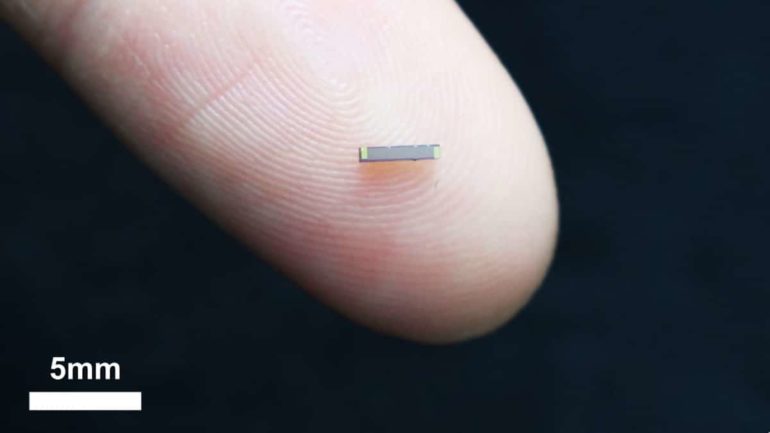A tiny microsupercapacitor (MSC) that is as small as the width of a person’s fingerprint and can be integrated directly with an electronic chip has been developed. This has attracted major attention as a novel technology to lead the era of Internet of Things (IoT) since it can be driven independently when applied to individual electronic components.
Through the study, Professor Sang-Young Lee and his research team in the School of Energy and Chemical Engineering at UNIST have unveiled a new class of ultrahigh areal number density solid-state MSCs (UHD SS–MSCs) on a chip via electrohydrodynamic (EHD) jet printing. According to the research team, this is the first study to exploit EHD jet printing in the MSCs.
A supercapacitor (SC), also known as an ultracapacitor, can store much more energy than ordinary capacitors. The benefits of supercapacitors include having high power delivery and longer cycle life compared to lithium-based secondary batteries. In particular, it can be produced as small as the width of a person’s fingerprint via semiconductor manufacturing process, and thus can be also applicable for wearables and internet of things (IoT) devices.
However, becuase the heat produced in manufacturing process may cause deterioration of the electrical characteristics of the supercapacitor, it has been difficult to connect them directly to electronic components. In addition, the fabrication method that combines supercapacitors with electronic components via inkjet printing technique has also the disadvantage of lower precision.
The research team solved this issue using EHD jet printing, a high-resolution patterning technique in microelectronics. EHD jet printing uses the electrode and electrolyte for printing purpose similar to that of conventional inkjet printing, yet it can control printed liquid with an electric field.
“We were able to produce up to 54.9 unit cells per square centimeter (cm2) via electro-hydrodynamic jet printing technique, and thus the output of 65.9 volts (V) was achieved in the same area,” says Kwonhyung Lee (Combined M.S/Ph.D. of Energy and Chemical Engineering, UNIST), the first author of the study.
The team also succeeded in fabricating 36 unit cells on a chip (area = 8.0 mm × 8.2 mm, 54.9 cells cm−2) and areal operating voltage (65.9 V cm−2) that lie far beyond those of previously reported MSCs fabricated by printing techniques. Besides, upon exposure to hot temperature (80 degrees C), these cells maintained normal cyclic voltammetry (CV) profiles, and thus has proven they can withstand excessive heat generated during the operation of actual electronic component. In addition, these batteries can provide customized powere supplies, as they can be connected either in series or parallel.
“In this study, we have demonstrated on-chip UHD SS–MSCs fabricated via EHD jet printing,” says Professor Lee. “The on-chip UHD SS–MSCs presented here hold great promise as a new platform technology for miniaturized monolithic power sources with customized design and tunable electrochemical properties.”
New study presents all‐solid‐state printed bipolar Li–S batteries
More information:
Kwon-Hyung Lee et al. Ultrahigh areal number density solid-state on-chip microsupercapacitors via electrohydrodynamic jet printing, Science Advances (2020). DOI: 10.1126/sciadv.aaz1692
Provided by
Ulsan National Institute of Science and Technology
Citation:
Tiny micro supercapacitor for wearable devices (2020, November 3)
retrieved 3 November 2020
from https://techxplore.com/news/2020-11-tiny-micro-supercapacitor-wearable-devices.html
This document is subject to copyright. Apart from any fair dealing for the purpose of private study or research, no
part may be reproduced without the written permission. The content is provided for information purposes only.


